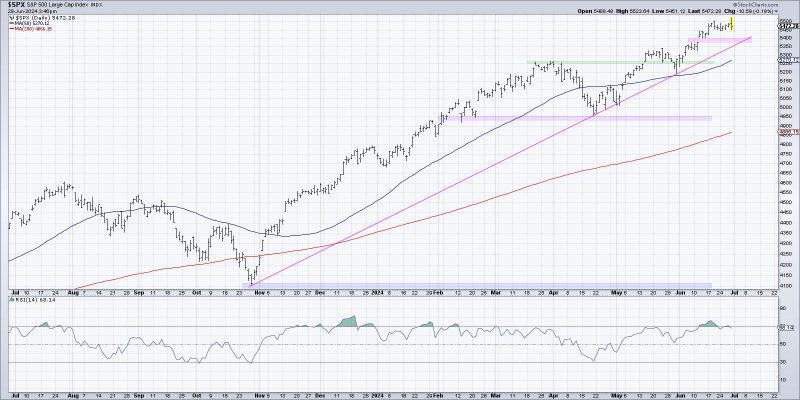The question of whether the S&P 500 can move meaningfully higher without NVDA (NVIDIA) is a pertinent one, as NVDA has been a significant player in the market with its strong performance and impact on the technology sector. However, there are several factors to consider when evaluating the potential for the S&P 500 to continue its upward trajectory even without the contribution of NVDA.
One key aspect to consider is the overall diversity of the S&P 500 index. The index comprises 500 of the largest publicly traded companies in the United States across various sectors such as technology, healthcare, consumer goods, and financials. This diversity helps to mitigate the impact of any single stock or sector on the index as a whole. While NVDA has been a major contributor to the index’s gains in recent years, other companies within the index have also played significant roles in driving its performance.
Another factor to consider is the broader market conditions and economic trends. The performance of the S&P 500 is influenced by a variety of macroeconomic factors such as interest rates, inflation, and GDP growth. If these factors remain favorable and supportive of stock market gains, the S&P 500 may continue to move higher even in the absence of a strong performance from NVDA.
Additionally, investor sentiment and market psychology play a crucial role in determining the direction of the stock market. Positive investor sentiment can lead to increased buying activity and higher stock prices across the board, while negative sentiment can result in selling pressure and downward movement in stock prices. Therefore, even if NVDA were to underperform, bullish sentiment towards the stock market as a whole could support the S&P 500’s upward momentum.
Furthermore, corporate earnings and revenue growth are fundamental drivers of stock prices. As companies within the S&P 500 report their quarterly earnings, positive results can lead to higher stock prices and propel the index higher. Strong earnings from other companies within the index could offset any negative impact from NVDA’s performance and contribute to the S&P 500’s overall growth trajectory.
In conclusion, while NVDA has been a significant contributor to the S&P 500’s performance, the index is comprised of a wide range of companies across different sectors that collectively influence its direction. Factors such as market diversity, broader economic conditions, investor sentiment, and corporate earnings all play critical roles in determining the S&P 500’s movement. Therefore, it is possible for the S&P 500 to move meaningfully higher even without NVDA’s strong performance, as long as other positive factors are at play in the market.
